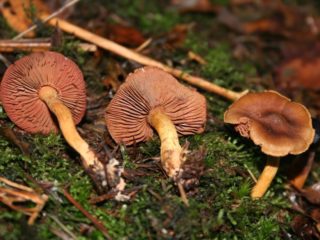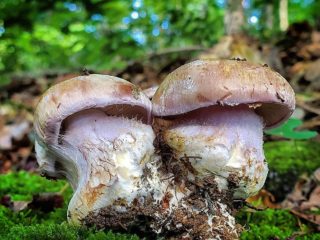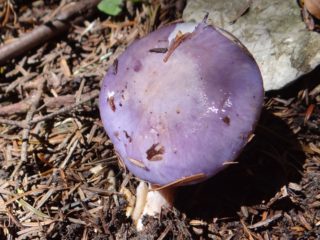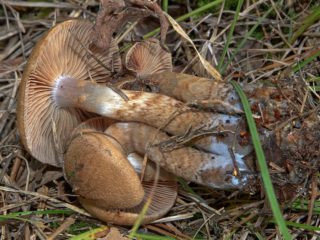Content
Marsh webcap, willow, marsh, coastal - these are all the names of the same mushroom, which is part of the Cobweb family. A characteristic feature of this genus is the presence of a cortina along the edge of the cap and on the stem. This species is found much less often than its congeners. Its official name is Cortinarius uliginosus.
What does a marsh webcap look like?
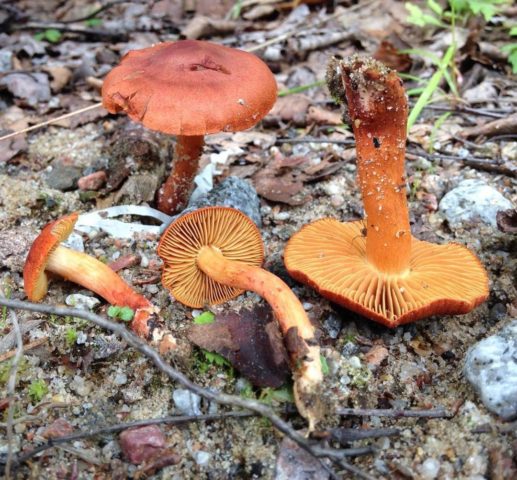
The edges of the cap of the marsh spider web in most cases crack
The fruit body has a traditional shape, therefore both the cap and the leg are clearly expressed. But in order to distinguish it from other species in the forest, it is necessary to study in more detail the features of this representative of a large family.
Description of the hat
The upper part of the marsh webcap changes its shape during the growth period. In young specimens, it resembles a bell, but when it ripens, it expands, maintaining a bulge in the center. The diameter of the cap reaches 2-6 cm. Its surface is silky. The color ranges from coppery orange to reddish brown.
The flesh at the break has a pale yellow tint, but just under the skin it is reddish.
On the back of the cap, you can see rarely located plates of a bright yellow hue, and when ripe, they acquire a saffron color. Spores are elliptical, wide, rough. When ripe, they turn rusty brown. Their size is (7) 8 - 11 (12) × (4.5) 5 - 6.5 (7) μm.
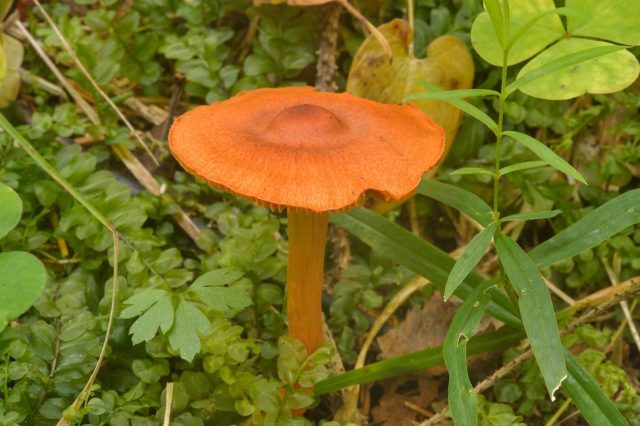
You can recognize the marsh cobweb by the characteristic smell of iodoform that it exudes
Leg description
The lower part is cylindrical. Its length can change dramatically depending on the place of growth. In an open meadow, it can be short and be only 3 cm, and near a swamp in moss it can reach 10 cm. Its thickness varies from 0.2 to 0.8 cm. The structure is fibrous.
The color of the lower part is slightly different from the cap. It is darker from above, and lighter at the base.
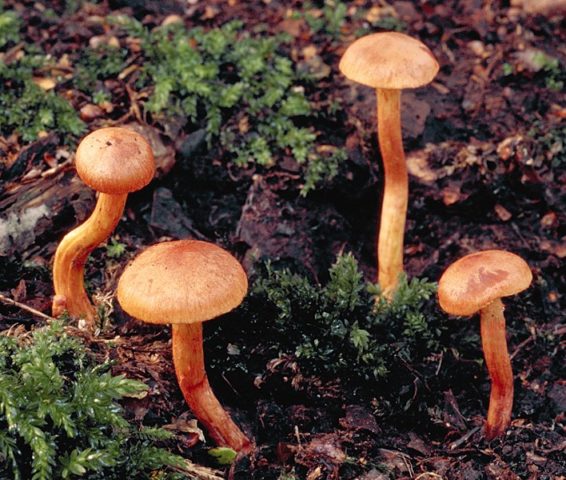
On the leg of the marsh spider web there is a slight red band - the remains of the bedspread
Where and how it grows
The marsh webcap prefers to grow in humid places, like its other relatives. Most often it can be found under willows, less often near alder. The active period of fruiting occurs in August-September.
Prefers the following habitats:
- mountain lowlands;
- along lakes or rivers;
- in the swamp;
- dense grass thickets.
Is the mushroom edible or not
The marsh webcap belongs to the category of inedible and poisonous. It is strictly forbidden to eat it fresh and after processing. Ignoring this rule can cause severe intoxication.
Doubles and their differences
This species is in many ways similar to its close relative, the saffron spider web. But in the latter, the pulp at the break has a characteristic radish smell.The color of the cap is rich chestnut brown, and along the edge is yellow-brown. The mushroom is also inedible. It grows in pine needles, heather-covered areas, near roads. The official name is Cortinarius croceus.
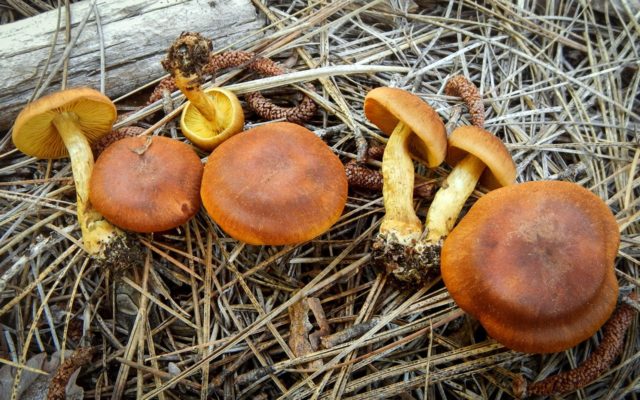
The color of the cortina in the saffron spider web is lemon yellow
Conclusion
The marsh webcap is a striking representative of its family. Experienced mushroom pickers know that this species cannot be eaten, so they bypass it. And beginners need to be careful that this mushroom does not end up in the general basket, since even a small piece of it can cause serious health complications.





